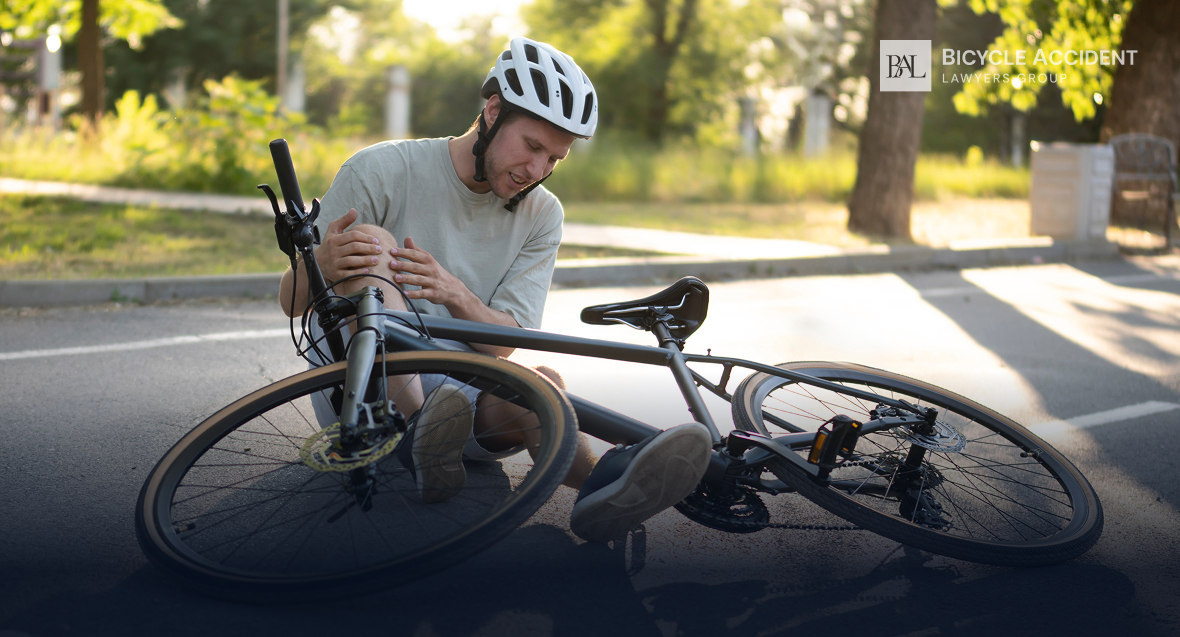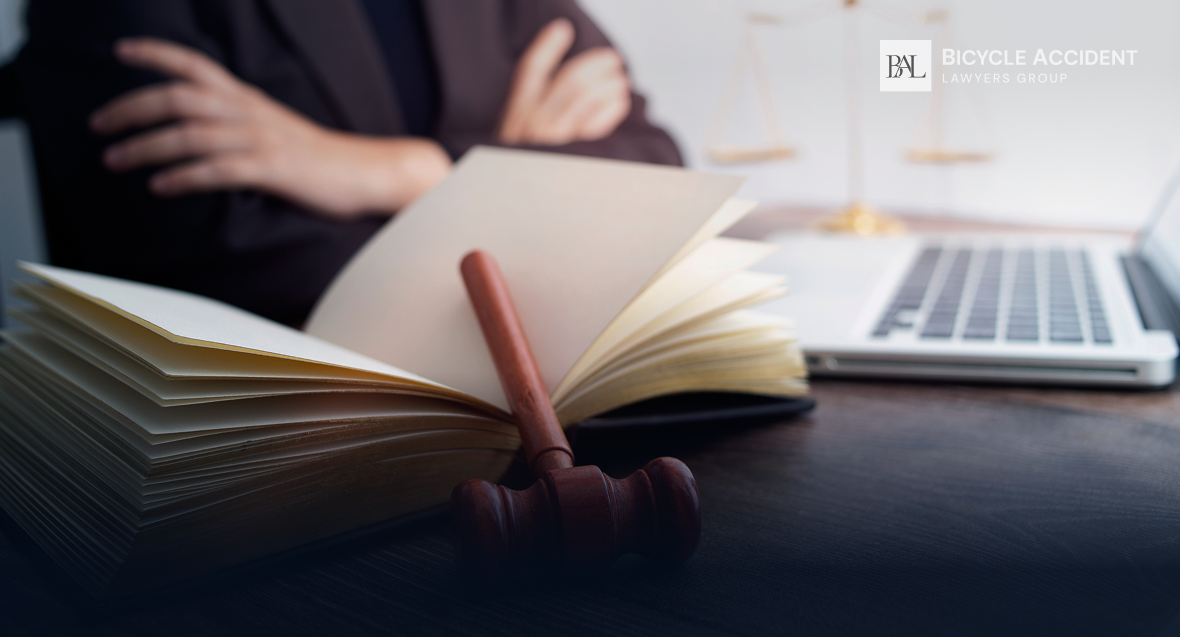Riding bicycles in such a busy city as New York comes with a set of undeniable perks. However, with the advantages always come responsibility and risks. According to the recent NY bicycle accident statistics, over 5,000 cyclists were seriously injured on the city streets in 2024. Almost 0.5% of bike accidents were fatal.
To improve bicycle safety in the city as well as across the state, local authorities implement different rules and regulations. Bicycle helmet laws in New York are certainly aimed at saving lives.
Key Takeaways
- Almost 85% of deadly injuries sustained by bicycle riders could have been prevented if the victims had worn helmets.
- A certified and well-fitted bike helmet can not only improve your safety but also impact the outcome of your personal injury claim.
- Getting injured in an accident while not wearing a helmet can lead to compensation that is below the average bicycle accident settlement in NYC.
- If you’ve been in an incident, working with a trained personal injury attorney will help you improve your chances.
Bicycle Helmet Laws in New York
A quality bicycle helmet is a reliable yet not precisely mandatory head protection in the USA. But what does New York state law say about this useful headgear? According to NY cycling laws, riders should comply with the following regulations related to helmet use:
- All riders under 14 must wear a helmet while cycling.
- All cyclists operating Class 3 electric bikes must wear helmets at all times.
- People who use bicycles for work, such as delivery staff and couriers, must wear certified bicycle helmets provided by their employers.
- Children from one to five years of age aren’t allowed to be transported as bike passengers unless they wear protective helmets.
- Riders violating the helmet law in New York may be subjected to NYC cycling tickets and fines in the sum of $50.
The rules may be different in some municipalities. For example, in Greenburgh, as well as in Rockland County, all cyclists, regardless of their age, are required to wear a helmet while biking.
Local police departments and other authorities enforce these traffic laws to improve road safety. That is why, if you are new to a location, it is always a wise idea to consult local legislation that concerns helmet laws. Noncompliance with local laws may result in various charges.
Lastly, regardless of helmet law, the absence of quality protective headgear could become an important nuance in a bicycle accident. Your settlement may be compromised due to the lack of a helmet at the time of the collision.
Bike Accidents and Helmet Use: New York Statistics
Helmet use can make a true difference, especially in largely urbanized areas, and available statistics prove it. According to the New York Department of Health, around 1,650 people require hospitalization after a bicycle accident annually. One-third of all patients have varying-scale traumatic brain injuries, which could have been avoided if the victims had worn helmets.
NYS bicycle crash report for 2024 indicates that at least 54% of cyclists who died in an accident weren’t wearing a helmet. Moreover, 59% of severely injured riders had no protective headgear on.
Despite these unfavorable stats, many cyclists continue to neglect helmet use, putting themselves at risk during every ride. That is why the state of New York, as well as local municipalities, work on different educational events and programs to spread awareness. Moreover, some organizations go as far as distributing helmets to those in need.
Bike Helmet: A Small Investment That Makes a Difference
Not everyone is aware of the benefits bicycle helmets have. For instance:
- Head protection: A well-fitted and secured headgear can reduce the risk of head injuries by an impressive 85%. A traumatic brain injury, like a brain contusion, skull fracture, concussion, or intracranial hemorrhage, can have a lasting, if not lethal, impact.
- Enhanced ventilation: Some modern helmets are designed with proper airflow in mind. This means that your head will remain cooler than it would be if you weren’t wearing one.
- Debris shield: Riding along a busy road comes with certain risks. Little stones and debris can swirl from under the wheels of a car and aim right at your unprotected head.
- Good mounting spot: Helmets serve as reliable mounting spots for lights and cameras.
How Do I Choose the Right Helmet?
Any helmet is indeed better than no protection at all. However, depending on how and where you ride, you should choose the headgear that fits best and corresponds to major safety standards for a better chance of avoiding injury. You may want to pay increased attention to the following characteristics:
Helmet Type
There are a few types of helmets you can pick from. They include, but are not limited to, the following:
- Urban-use helmets: If you plan to navigate city streets on your bike for the most part, then commuter helmets would be your best option. They are well-ventilated, sleek, and often equipped with necessary lights and reflectors.
- Road-use helmets: In case you want to try racing and commuting over longer distances, then a road helmet may be what you need. They are lightweight, well-ventilated, and durable.
- Trail helmets: Those of you willing to unleash the adventurous side and conquer off-road trails need advanced protection. Mountain-use helmets are often more rugged and offer extra protection, considering the dangers of such terrains.
Safety Standards
After you’ve decided on the type of biking helmet, you must ensure that it corresponds with existing safety standards. It is a wise choice to opt for models approved by the Consumer Product Safety Commission (CPSC).
Additional certifications, such as the American Society for Testing and Materials (ASTM) or Multi-Directional Impact Protection System (MIPS), would make it even more reliable and worth the investment. These organizations check if the helmet can actually protect your head from external forces.
Comfortable & Safe Fit
A cycling helmet won’t be able to deal with the force of the impact and block head injuries if it sits too loosely. At the same time, it shouldn’t be too tight. A quality helmet should sit low on your forehead, about two fingers over your eyebrows. When you strap it under the chin, at least two fingers should fit in between the chin and the strap.
Visibility Improvement
A good helmet must also be visible when you are on the road. That is why you should pay attention to models that feature built-in lights and reflectors. Also, you may want to acquire a helmet in brighter colors so that you stand out from the traffic, no matter the time of day.
Reliability & Durability
Since the primary purpose of a helmet is to reduce the chance of skull fractures and other serious head injuries, it must be durable enough to withstand one crash. After a single collision, no matter the scale, a helmet loses its protective function. That is why you should replace a bike helmet right after you have been in a bicycle accident.
What Should You Do If You Get Injured in a Bicycle Accident Without a Helmet?
New York abides by the pure comparative negligence rule, meaning that even if you didn’t wear a protective helmet at the moment of the crash, you are still eligible for fair compensation. However, you should be aware of what to do after a bicycle accident in New York to manage the situation without causing yourself further physical, financial, and legal harm. We suggest you consider these steps:
- Inspect yourself and check the scene: Take a deep breath and try to assess the situation as calmly as possible.
- Talk to first responders: Wait until the medics and the police arrive at the scene. Let yourself be inspected by a medical professional and recount the accident to the police officer.
- Gather evidence: Pay attention to the scene. Take pictures of every detail that seems important.
- Notify the insurance company: Injured cyclists who didn’t wear helmets at the moment of the crash can recover their losses. However, postponing the report may affect the outcome of your claim, so try to reach out to the at-fault party’s insurance company soon.
- Consult a specialized lawyer: Many New York bicycle accident lawyers offer free case evaluations. Some of them also work on a no-win, no-fee basis, meaning that there are no upfront charges to worry about.
A bicycle accident attorney will be able to ensure that the insurance company doesn’t reduce your compensation unfairly, even if the absence of a helmet contributed to your injuries.
Contact Our Experienced NYC Bicycle Accident Lawyer for Free Today!
Cyclist safety depends on many factors, and protective helmets are surely at the top of the list. The New York helmet law only requires young riders to wear protective headgear. Yet, the fact that it does not apply to other cyclists shouldn’t make you want to risk your well-being. Heavy traffic, dangerous road conditions, and negligent drivers can leave you facing piling bills, serious injuries, and emotional distress.
Surely, a traumatic incident can happen regardless of whether you’ve had your helmet on. That is why professional legal assistance matters greatly, too. Contact our team for a free consultation today and make sure that your rights are protected and fair compensation is on the way!
If you’re a cyclist who has been in an accident, call today for a free initial consult about your legal claim. We’re here to help with your legal questions. Contact our law firm for coast-to-coast bike accident and personal injury representation.




![title Car Vs. Bicycle Accident Statistics [2025 Updated]](https://bicycleaccidentlawyers.com/wp-content/uploads/2025/07/Group-28.png)


